

Table of contents
- The flowering perennials
- The blooming perennial bed
- Some ideas
- Creating instructions for the planting plan - what is important?
The German gardener can choose from a total of around 40,000 ornamental plants, and the flowering perennials make up a considerable part of these ornamental plants. Not without reason, the perennial, non-woody perennials are the second large group of "self-runners" in our gardens next to the woody plants. The flowering perennials are among the most rewarding flowering plants of all, with more long-flowering than short-flowering perennials, there are almost endless possibilities when it comes to a planting plan for a flowering perennial border create:
The flowering perennials
Right at the beginning, for motivation, a small list of flowering perennials, with flowering times all year round:
The first flowers from March
- Anemone nemorosa, anemone
- Alyssum montanum, Mountain Alyssum
- Caltha palustris, marsh marigold
- Epimedium perralderianum, Elf Flower
- Omphalodes verna, spring umbilicus
- Primula elatior, cowslip, soft yellow flowers
- Pulmonaria angustifolia, Narrow-leaved Lungwort, in cultivar 'Azurea' with royal blue flowers
- Pulmonaria rubra, garden lungwort, bright red flowers
- Pulsatilla vulgaris, pasqueflower, light purple flowers
The spring bloomers from April
- Ajuga reptans, crawling bugle
- Alyssum saxatile, Rock Alyssum, yellow flower
- Aquilegia hybrid, columbine, variety 'Blue Tones' flowers intense blue
- Aubrieta hybrids, blue cushions in cultivars, 'Newcomer' lavender blue, 'Royal Blue' dark blue, 'Royal Red' magenta, 'Dr. Mules' dark purple
- Bergenia cordifolia, Bergenia
- Brunnera macrophylla, Large-leaved Caucasus Forget-Me-Not, pure blue flowers
- Buglossoides purpurocaerulea, Blue-Red Stoneseed, royal blue flowers
- Corydalis lutea, Yellow Corydalis
- Dicentra spectabilis, Bleeding Heart, pink to crimson flowers
- Geranium macrorrhizum, Balkan cranesbill
- Gypsophila Repens
- Helianthemum hybrid, rockrose
- Heuchera hybrid, purple bells, 'Firebird' flowers dark scarlet, 'Red Spangles' bright red
- Lychnis viscaria, cultivar 'Plena', has bright pink flowers
- Phlox subulata, cushion phlox
- Polemonium caeruleum, Blue Ladder to Heaven, blue flowers
- Pulmonaria rubra, garden lungwort, variety 'Dora Bielefeld' flowers bright pink
- Vinca minor + major, small + large periwinkle
- Waldsteinia geoides, lobate-leaved Waldsteinia, yellow flowers
- Paeonia officinalis, Peony
- Saxifraga urbium, Porcelain Flower, cultivar 'Clarence Elliott' has pink flowers
- Tellima grandiflora, false mandrake root, flowers greenish-pink and like a giant lily of the valley
- Veronica austriaca teucrium, Tuft Speedwell
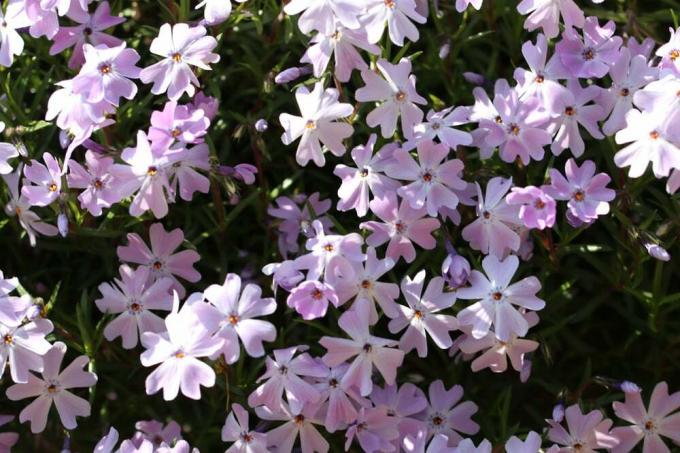
Perennial summer bloom
- Aconitum napellus, monkshood, dark blue flower
- Achillea millefolium hybrid
- Aquilegia alpina, columbine in pure blue
- Delphinium grandiflorum, e.g. B. in the cultivar 'Blauer Zwerg' bright with radiant light blue flowers
- Dianthus deltoides, heather pink
- Digitalis purpurea, flowers pink, carmine, purple
- Hemerocallis hybrid, daylily
- Hosta crispula, hosta, flowers light purple
- Linum perenne, perennial flax
- Lupinus Polyphyllus, Multi-leaved Lupine
- Oenothera tetragona, garden evening primrose
- Papaver orientale, e.g. B. in variety 'Queen Alexandra' salmon pink
- Rodgersia, record leaf, creamy white to burgundy flower clusters
- Sedum acre, stonecrop, bright yellow flowers
- Trollius chinensis, Globeflower
autumn to winter
- Aconitum carmichaelii, monkshood, deep purple flowers
- Ceratostigma plumbaginoides, Chinese leadwort
- Coreopsis grandiflora, Maiden's Eye, golden yellow flowers
- Cortaderia selloana 'Rosa Feder', pampas grass with pink fronds
- Filipendula ulmaria, Meadowsweet, creamy white flowers
- Geranium endressii, Basque cranesbill, pink flower
- Helleborus niger, Christmas rose
- Miscanthus sinensis, Chinese reed, silvery to light red flowers
- Oenothera missouriensis, Missouri evening primrose, light to lemon yellow flower
- Phuopsis stylosa, Long Handled Rose Woodruff, pink flowers
- Sedum telephium, sedum plant
- Solidago caesia, golden ribbon rod, golden yellow flowers
All flower colors, all flower heights, and there are the classic flowering shrubs such as aster, iris (iris, shrub of the year 2016), chrysanthemum and the classic natural garden beauties such as spurge, wild strawberry, woodruff and perennial grasses (carex, sedge, perennial of the year 2015) not at all included.
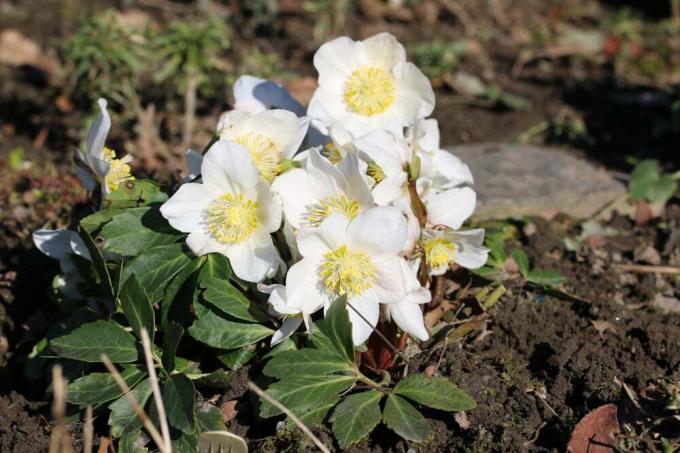
There are cultivars of every perennial species, sometimes incredibly many, with different colors and with different flowering times, and some of the Spring flowers bloom all summer anyway - it's not difficult to create a bed with flowering perennials that last all season over blooms. Especially when such a variety of flowering plants is available, the design should not be haphazard:
The blooming perennial bed
Now that you have indulged in flowering perennials enough, one or the other wonderfully colorful bed has certainly passed your mind's eye. Now it's time to develop a basic idea for your perennial bed, the following thoughts could or should play a role:
- The bed full of flowering perennials will probably be the most eye-catching part of your "decorative garden".
- A fairly high-maintenance part, which is why the size of the bed should be carefully considered
- The more in the immediate field of vision, the more care it takes to keep the bed looking neat
- In addition to location and size, the basic shape of the bed (beds) must be decided
- When it comes to choosing plants, it makes a big difference whether you want to plant a larger bed or several small patches
- If the location is more important to you than the shape, there are usually specifications from the previous garden design
- Also in relation to the later harmonious effect, dead straight paths tend not to get along with a bed in a curved fantasy shape
- And vice versa, square beds in front of paths drawn through the garden in beautiful curves can look just as funny
- The more precisely your garden is structured, the more precisely the bed outlines must be planned
- Possibly with a little space for a designed bed border
- In contrast, splashes of color can be casually distributed in the natural garden, which is deliberately “messy”.
Some ideas
The colorful variety of perennials can quickly overwhelm the gardener, a motto makes the selection easier and gives the blooming perennial bed structure:
Flowering perennial border with lots of colour
The whole spectrum of colors and flowers can be combined with the perennials, in graduated harmonies or contrasts:
- tone on tone, e.g. B. Perennials flowering only in as similar a red as possible or perennials flowering only pink, purple, yellow
- Tone on tone, but from light to dark, e.g. B. from pink to bright pink, e.g. B. Soft pink columbine, full of pink ranunculus, pink hollyhocks
- You can combine related colors, turquoise and blue, ultramarine and violet
- You can plant a dance of neighboring colors, yellow, golden yellow, orange and orange-red
- You can plant perennials in complementary colors, blue and orange for example
- Or you can simply plant all your favorite colors in the bed, for example red, orange and violet
Extravagant: flowering perennial with colorful foliage
An unusual variant of the blooming perennial bed combines decorative leaf perennials with colour-harmonizing flowers:
- The Heuchera hybrid "Berry Smoothie" blooms bright pink, with delicate blue chicory a spherical fairytale world
- The purple Hauchera hybrid "Plum Pudding" makes an equally dreamy combination with dull pink mallow and purple peonies
- Simple hostas with white variegated and strong yellow variegated leaves offer a rather surprising picture in combination with daisies
- Silverleaf sage under soft pink sedum cushions makes a bed as fluffy as a cozy sofa
- Cream-colored Turk's cap lilies between delicate Chinese reed fronds is elegance tone on tone
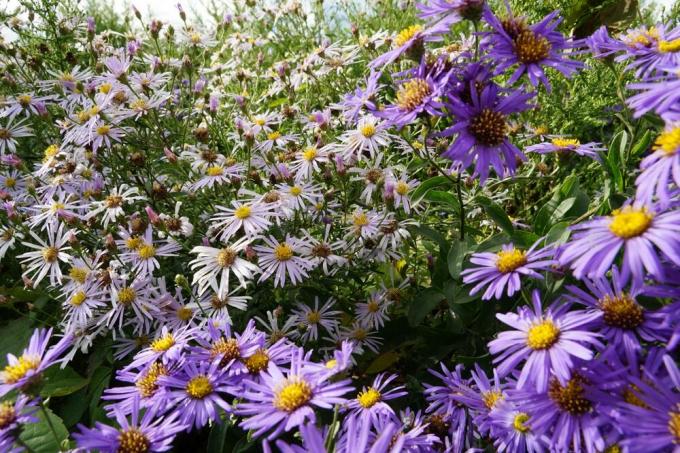
Flowering perennials by species/variety
Always interesting for purists, and the wildest color combinations are probably possible here:
- Asters of pink, pink, magenta, light blue, light lilac, violet can paint pictures in flower beds
- Chrysanthemums in all shades of orange and red are more reminiscent of "fire in the bed"
- Whole beds full of colors of the same variety can be designed with many flowering perennials
- You can combine flowering perennials of different varieties and heights
- From "small and red" to "large and red" or as a sweep through the entire color palette
- Purists like white on white, in as many varieties as possible
Flowering perennials "in shape"
Not the shape of the flowers, but the shape of the perennials in the bed, with which you can plant patterns:
- An island of tall flowering perennials will be surrounded by smaller flowering perennials
- Or several islands intertwine in a bed
- Such an island does not have to be round, it can also be oval, drop-shaped, square
- A diced bed is possible, or a striped one, or one full of diamonds
- You can also draw a picture or a symbol in your bed
Flowering perennial with leafy greens
If all this is too colorful for you, you have it easy: combine a flowering perennial with a suitable evergreen plant. Ivy and fat man with small flowering perennials, evergreen creeping spindles with golden yellow chrysanthemums, all kinds of tall grasses with all kinds of flowering perennials of about the same height ...
Creating instructions for the planting plan - what is important?
Without proper planning, none of these ideas will ever see the light of day the way you see them in your head. Rather, the planting plan is compiled according to certain specifications that gardeners have developed over many years of experience:
1. Select key plants, the most expressive and tallest growing plants, intended to dominate the bed.
These are large, magnificent perennials that immediately catch the eye. You get the best spots in the bed, the rest is planted around it and depends on you. Examples of these perennials, also known as scaffolding plants:
- flame flowers
- lilies
- peonies
- splendor spars
- rocket flowers
- Delphinium,
- silver candles
- Turkish poppy
- steppe candles
Not too many of these key plants should be used, as this weakens their effect rather than bringing any visual gain.
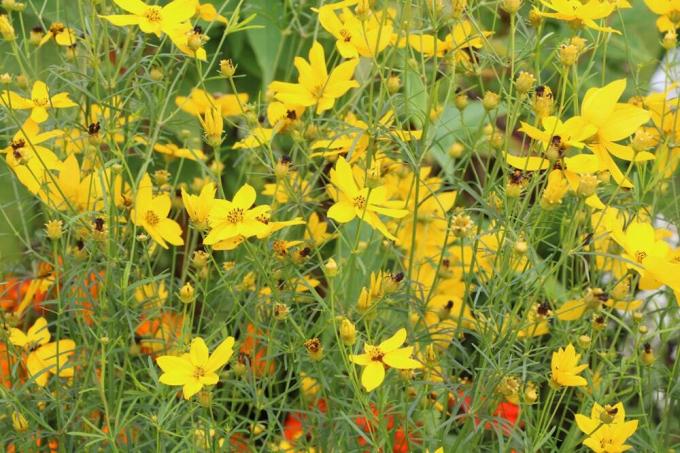
2. Choose matching (or contrasting) companion plants, which give the planned geometry of the bed the basic shape.
They are planted in groups around the leader plants and are slightly smaller and less conspicuous than the leader plants. All colorful flowering, low and medium-tall perennials can become companion plants. The selection must be large so that the accompanying plants can be selected in the right color. Examples of companion plants:
- Akelein
- asters
- iron hats
- thimbles
- geraniums
- girl eyes
- cloves
- coneflower
- daylilies
- crying heart
3. The remaining free areas are covered with so-called filler plants, ground cover or carpet-forming perennials.
4. Lead plants, companion plants and filler plants are staggered according to flowering time so that the perennial border blooms without a break from spring to autumn.
5. If you intend a bed design in patterns or pictures, you will deviate from the Choose flowering perennials of equal value that will also flower together for as long as possible should.
Now all you have to do is check whether your planting plan can be implemented at the planned location. The location must be suitable for the planned planting without requiring more work than a little ground maintenance. Possibly. It's better to plan again, you can't change the lighting conditions anyway, then you can start buying plants.
A notice:
There isn't one set of instructions for creating a planting plan for a blooming perennial bed, there are many different ones. Starting from a certain basic idea, you can really combine any design that you would like to see in your garden with the flowering perennials.
 garden editorial
garden editorial I write about everything that interests me in my garden.
Learn more about caring for plants
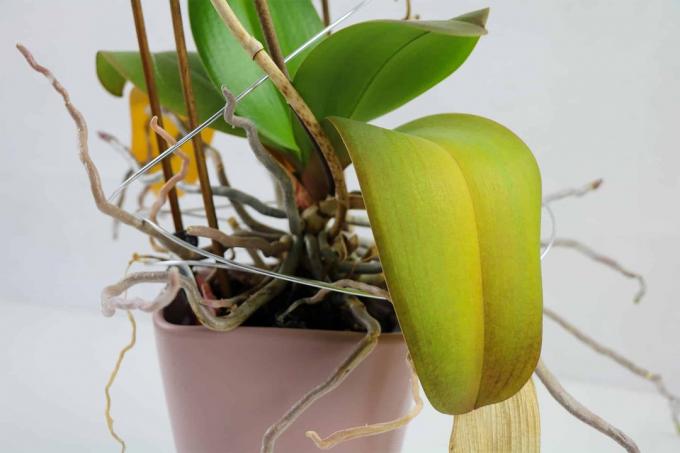
Plant hangs leaves despite water
If plants let their leaves hang despite water, this can have various causes. In order to prevent it from dying off by taking rapid countermeasures, you should find out about the possible causes and effective countermeasures here.
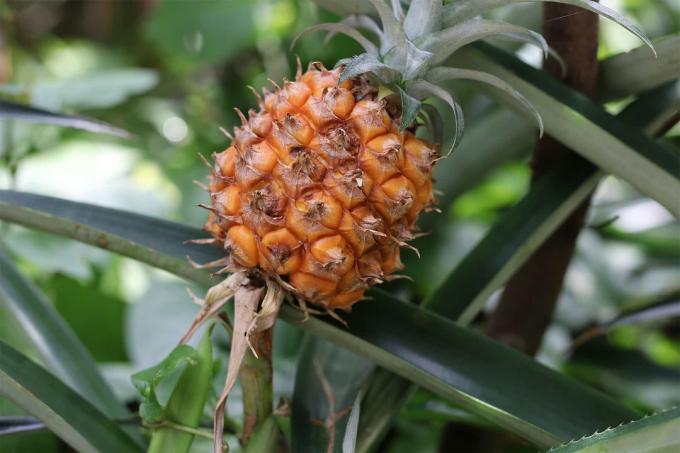
Plants hang their heads: what to do?
If the ornamental plants are cultivated in the garden or in pots and suddenly let their heads droop, then the question quickly arises as to why this can be. However, this is usually due to maintenance errors that need to be checked. If a remedy is found, most plants usually recover quickly.

Repot orchids: how & when to replant
Thanks to more uncomplicated and easy-care new breeds, orchids are now at home on many windowsills. In particular, the Phalaenopsis or butterfly orchid, which is available in countless varieties, is very popular. Read how and when you can best repot the distinctive beauties.

pull tree out of core | 7 tips for growing a tree yourself
Trees can be grown from cores without much effort. There are a variety of plants that have seeds and can be easily cultivated in your own garden. Special classic fruit trees should be mentioned, which are suitable for such a project.
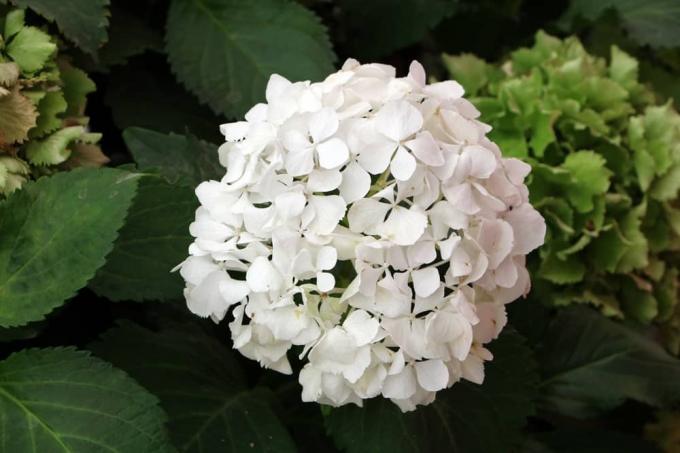
How do hydrangeas stay white? | That way it won't turn pink
How do hydrangeas stay white - this is the question many hobby gardeners ask themselves when the hydrangea changes color. The white often turns into a pink, which is usually comparatively pale or can appear "dirty". Here we reveal how it works.
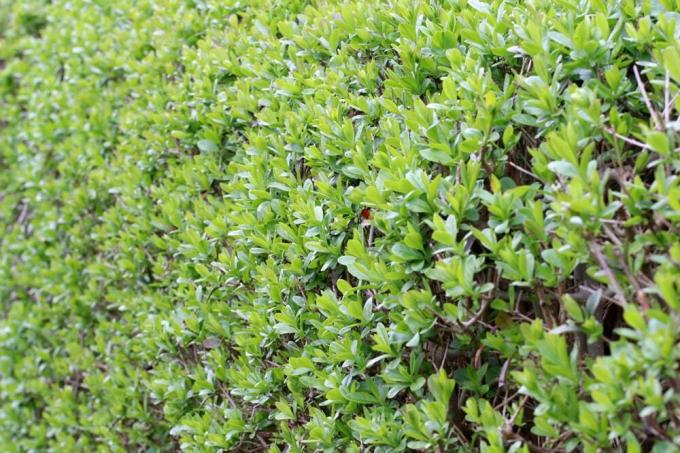
Cutting privet: when is the best time?
Privet is becoming increasingly popular and is often used as a privacy screen in the form of a privet hedge. This is not surprising, because the plant is easy to care for and fast-growing. However, it is crucial to cut the plant regularly at the right time.



